Why Yesanpo Scenic Area Should Be Your Next Travel Destination
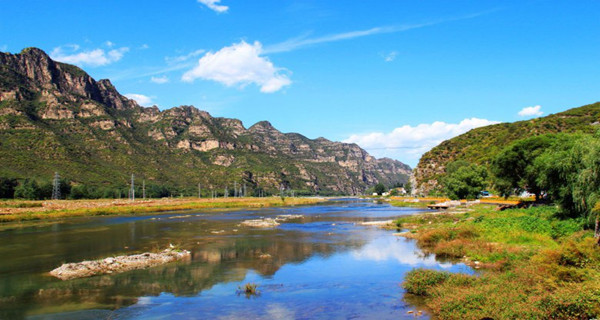
An Essential Guide to Visiting Yesanpo Scenic Area
In This Guide
- An Essential Guide to Visiting Yesanpo Scenic Area
- The Rich History and Legends of Yesanpo Scenic Area
- Main Highlights: What You Absolutely Can’t Miss
- Planning Your Visit: A Practical Guide
- Tickets: Prices, Booking, and Tips
- How to Get There: A Complete Transportation Guide
- Local Cuisine and Accommodation Nearby
- Frequently Asked Questions
- Final Thoughts on Your Trip
Visiting Yesanpo Scenic Area is like stepping into a captivating tapestry of natural beauty and rich cultural history. Nestled at the confluence of the majestic Taihang and Yanshan Mountains in Hebei Province, this UNESCO Global Geopark beckons travelers with its breathtaking landscapes and historical treasures. With over 498 square kilometers of pristine wilderness, Yesanpo is a haven for nature enthusiasts, adventure seekers, and history buffs alike.
As you explore the varied terrain, you’ll encounter a magnificent array of canyons, waterfalls, and lush forests. The area’s unique geological formations, including the famed Baili Gorge with its dramatic cliffs and narrow valleys, offer stunning vistas that change with the seasons—from vibrant blooms in spring to fiery autumn leaves and serene winter snowscapes. Yesanpo is not just a feast for the eyes; the high concentration of negative oxygen ions in the air makes it a refreshing escape, often referred to as a natural oxygen bar.
The history of Yesanpo is equally compelling. With evidence of human habitation dating back over 7,000 years, this region has witnessed the rise and fall of dynasties and played vital roles in China’s military history. The ancient inscriptions along the cliffs at Longmen Tianguan serve as a testament to its storied past, while the traditional folk customs, such as the Yesanpo wedding rituals, reveal the vibrant culture that has flourished here.
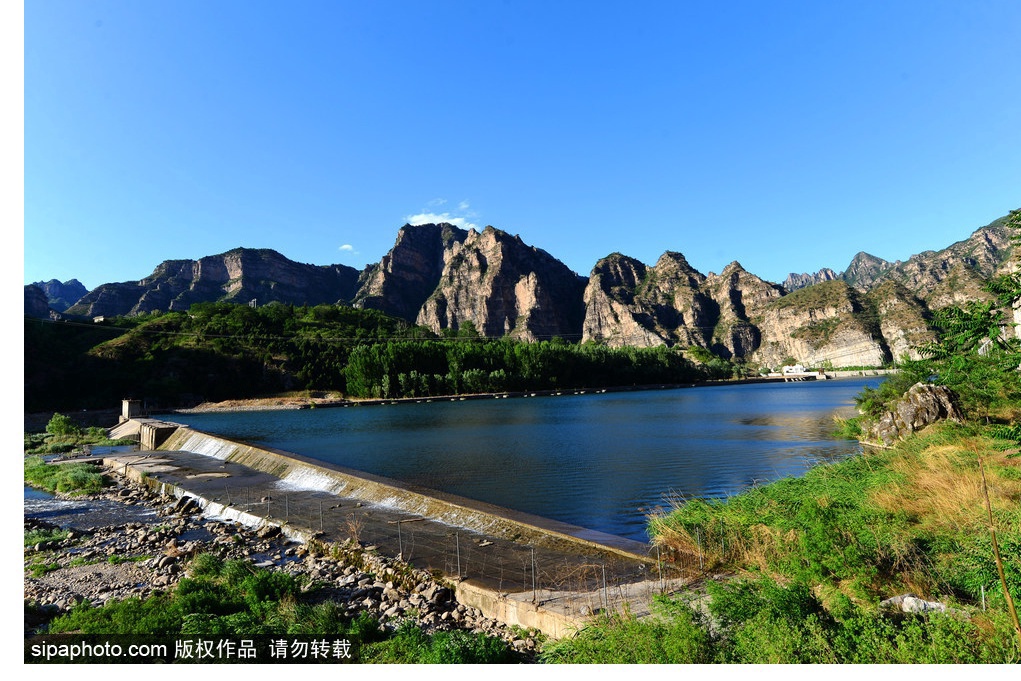
Yesanpo Scenic Area.
Why Visit Yesanpo?
- Natural Wonders: Experience the stunning landscapes featuring canyons, karst caves, and primeval forests.
- Cultural Heritage: Discover the rich history through ancient relics and traditional customs.
- Adventure Activities: Engage in thrilling outdoor activities such as rafting and hiking.
- Culinary Delights: Savor local specialties like roast whole lamb and fresh river fish.
Whether you are seeking adventure, tranquility, or a deeper understanding of China’s heritage, Yesanpo Scenic Area promises an unforgettable experience that connects you with the natural world and the stories of those who came before. Prepare to immerse yourself in this enchanting destination where history and nature intertwine beautifully.
The Rich History and Legends of Yesanpo Scenic Area
Nestled at the crossroads of the Taihang and Yanshan Mountains, the Yesanpo Scenic Area is not just a feast for the eyes but also a rich tapestry woven with threads of history and legend. Spanning over 498.5 square kilometers, this UNESCO Global Geopark is a sanctuary of natural beauty, but it is also a repository of ancient stories and cultural heritage that beckons travelers to delve deeper into its past.
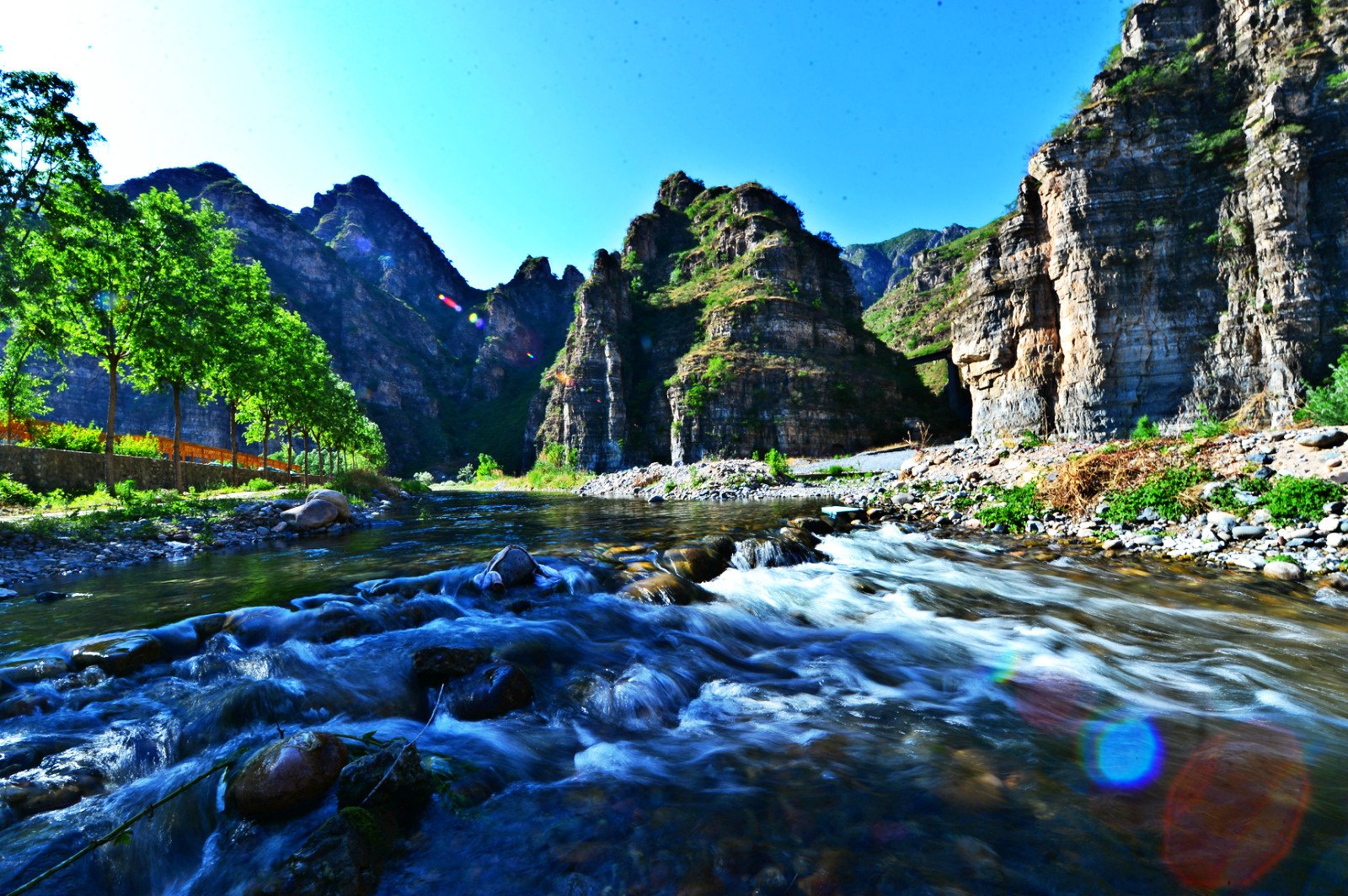
Yesanpo Scenic Area.
A Journey Through Time
The history of Yesanpo stretches back over 7,000 years, with archaeological evidence indicating human habitation since the Neolithic era. This region has witnessed the rise and fall of various dynasties, with its strategic terrain making it a coveted stronghold throughout history. During the Spring and Autumn Period and the Warring States Period, Yesanpo was part of the Yan State, a significant political entity of the time.
In the Ming Dynasty, the area became a crucial border defense stronghold, while in the Qing Dynasty, it earned the moniker “peach blossom land.” This appellation signifies the region’s isolation and self-sufficiency, leading to the development of unique folk cultures that continue to thrive today.
Legends and Folklore
Yesanpo is not only steeped in historical significance but also brimming with local legends that add a layer of charm to its allure. One such tale speaks of a beautiful girl who lived in the mountains, known for her enchanting singing. It is said that her melodious voice could soothe the wildest storms. The local people believed that her songs brought peace and prosperity, and they would often leave offerings at her shrine, nestled among the ancient trees.
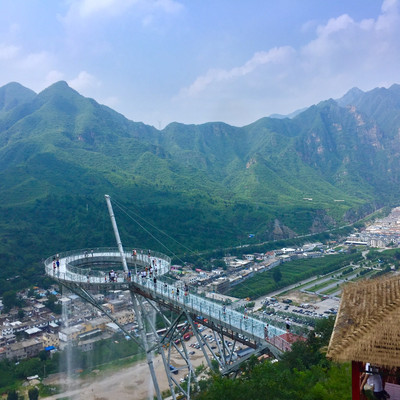
Yesanpo Scenic Area.
Another popular legend involves the Yugu Spring, a mysterious spring in the Yugudong Scenic Area. Every Guyu (Grain Rain) season, the spring is said to inexplicably spray fish from its mouth, a phenomenon that has fascinated both locals and scientists for centuries. Visitors can witness this unique occurrence from the “Observation Fish Platform,” where the natural world seems to defy explanation.
Cultural Heritage
The cultural heritage of Yesanpo is as diverse as its landscapes. The Cliff Inscription Group at Longmen Tianguan showcases poems and inscriptions from the Ming and Qing Dynasties, offering insight into the region’s literary and military history. Notable inscriptions such as “Wanren Tianguan” (Thousand-Feet Heavenly Pass) and “Qianfeng Gongli” (Thousand Peaks Arching) are essential for understanding ancient Chinese calligraphy, embodying the artistic spirit of their time.
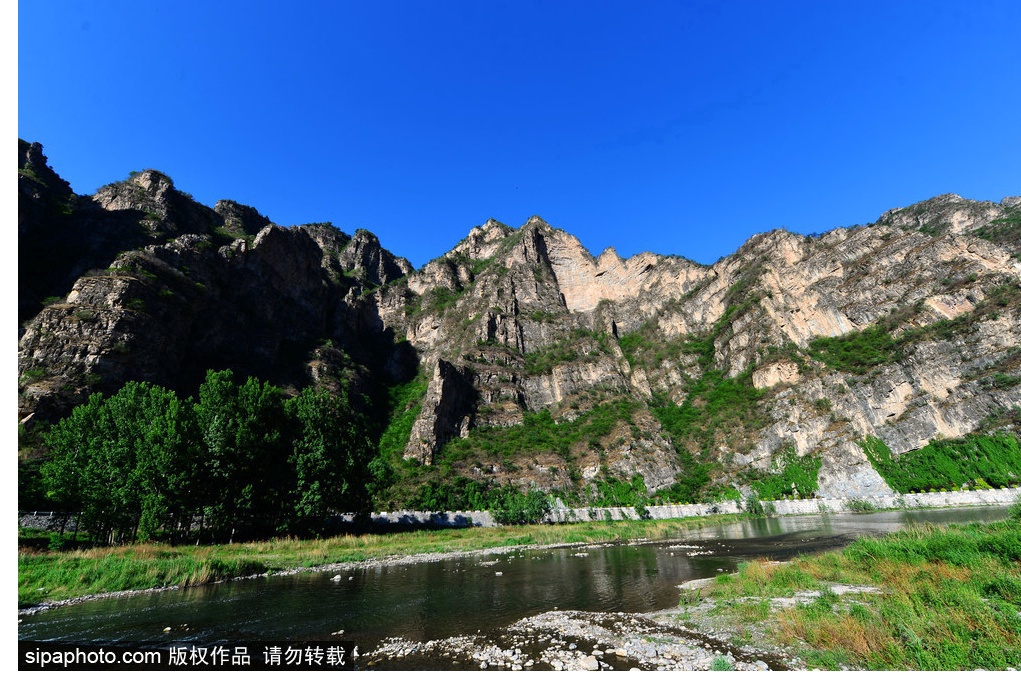
Yesanpo Scenic Area.
The area is also a vital revolutionary site. During the Anti-Japanese War, the Eighth Route Army established an anti-Japanese base in Yesanpo, giving rise to numerous heroic tales of resistance and bravery that continue to inspire generations.
Folk Customs and Traditions
Yesanpo’s unique geographical environment has fostered a rich tapestry of folk customs. The Yesanpo Traditional Wedding Custom is a highlight of the region’s intangible cultural heritage, captivating visitors with its vibrant rituals and heartfelt celebrations. Traditional performances such as the “Chaozi Association” and the “Dragon and Lion Dance” are still prevalent, connecting the community to its ancestral roots and providing a glimpse into the social fabric of the area.
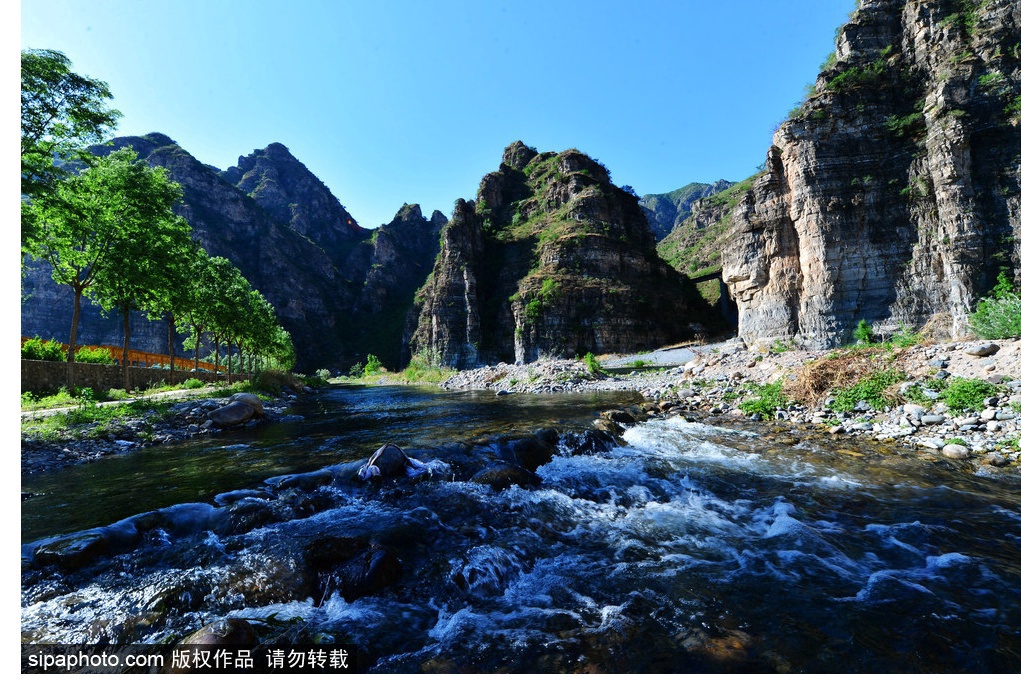
Yesanpo Scenic Area.
Conclusion
The Yesanpo Scenic Area is not merely a destination for nature lovers; it is a living museum of history and culture. As travelers explore its stunning landscapes—ranging from dramatic canyons and karst caves to serene rivers—they are also stepping into a world where every rock and stream tells a story. The legends, historical events, and rich traditions make Yesanpo a captivating place for those seeking to understand the heart and soul of China’s past. Whether you are wandering through the ancient inscriptions or listening to the whispers of local legends, Yesanpo invites you to discover its profound history and vibrant culture.
Main Highlights: What You Absolutely Can’t Miss
Yesanpo Scenic Area, a stunning blend of natural beauty and rich historical significance, offers a plethora of experiences for those eager to explore China’s cultural heritage. Here are the key highlights that you absolutely can’t miss during your visit:
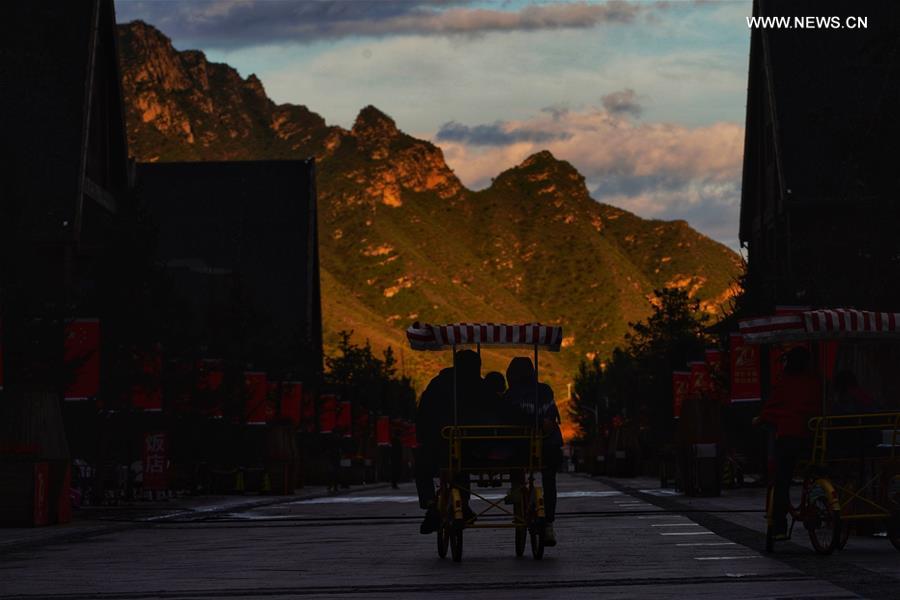
Yesanpo Scenic Area.
Baili Gorge Scenic Area
Baili Gorge stands as the centerpiece of Yesanpo, renowned for its dramatic zhanggu landform—a narrow valley with steep walls. Spanning approximately 105 li (52.5 kilometers), it features breathtaking canyons such as Haitang Valley and Scorpion Gully.
- Must-See Attractions:
- Yixiantian (Narrow Sky): A stunning passage just 0.83 meters wide, offering a sliver of sky above.
- Guanyin Stone: A striking rock formation with spiritual significance.
- Huquan (Tiger Spring): A refreshing natural spring with crystal-clear waters.
This area is not just a visual feast; with its high concentration of negative oxygen ions and a cool summer climate averaging 22°C, it serves as a rejuvenating retreat.
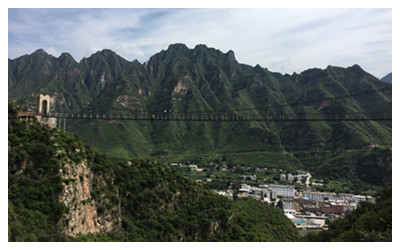
Yesanpo Scenic Area.
Yugudong Scenic Area
Yugudong, a vast karst cave stretching 1,800 meters, is a subterranean wonder.
- Highlights:
- Explore its five layers filled with unique formations such as stone curtains and stone waterfalls.
- Witness the mysterious Yugu Spring, known for its annual phenomenon of spouting fish every Guyu (Grain Rain) season.

Yesanpo Scenic Area.
This enchanting cave maintains a temperature of 13°C year-round, making it a perfect escape from the heat of summer.
Baicaopan Scenic Area
Reaching an altitude of 1,983 meters, Baicaopan is the highest peak in Yesanpo.
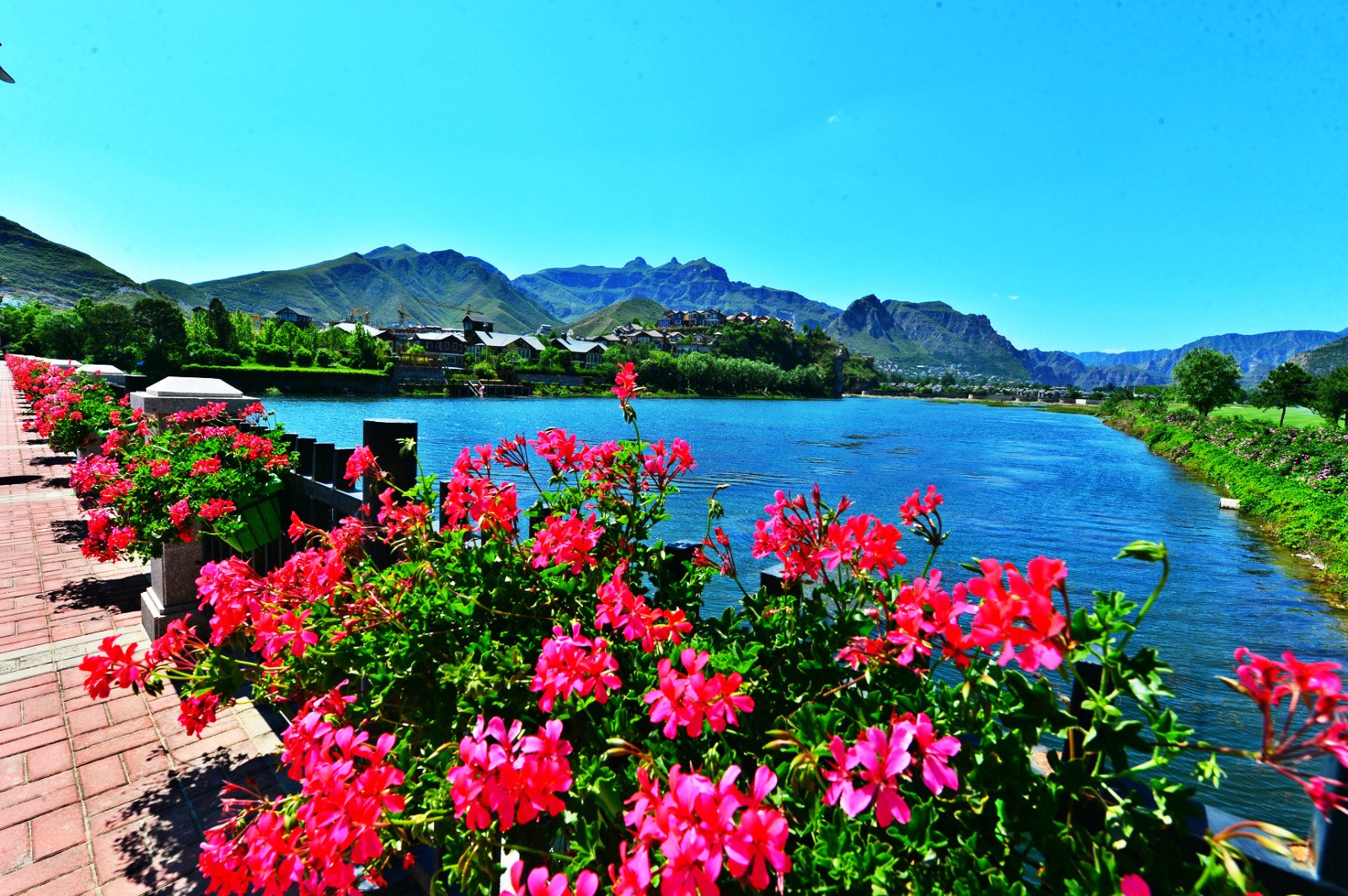
Yesanpo Scenic Area.
- Key Features:
- A dense virgin secondary forest teeming with over 1,200 plant species, including rare varieties like ginkgo and metasequoia.
- The Aerial Garden, an alpine meadow bursting with wildflowers in late spring, is a sight to behold.
In autumn, the foliage transforms into a vibrant tapestry of red leaves, making it an ideal spot for nature lovers and photographers alike.

Yesanpo Scenic Area.
Longmen Tianguan Scenic Area
Historically significant, Longmen Tianguan served as a critical military pass during the Ming and Qing dynasties.
- Historical Sites:
- The Cliff Inscription Group, featuring over 30 ancient inscriptions, showcases remarkable calligraphy and offers insights into military history.
- Explore remnants of the Ming Great Wall and ancient beacon towers that narrate tales of defense and strategy.
Visitors can immerse themselves in the echoes of history while enjoying the stunning cliffside views.
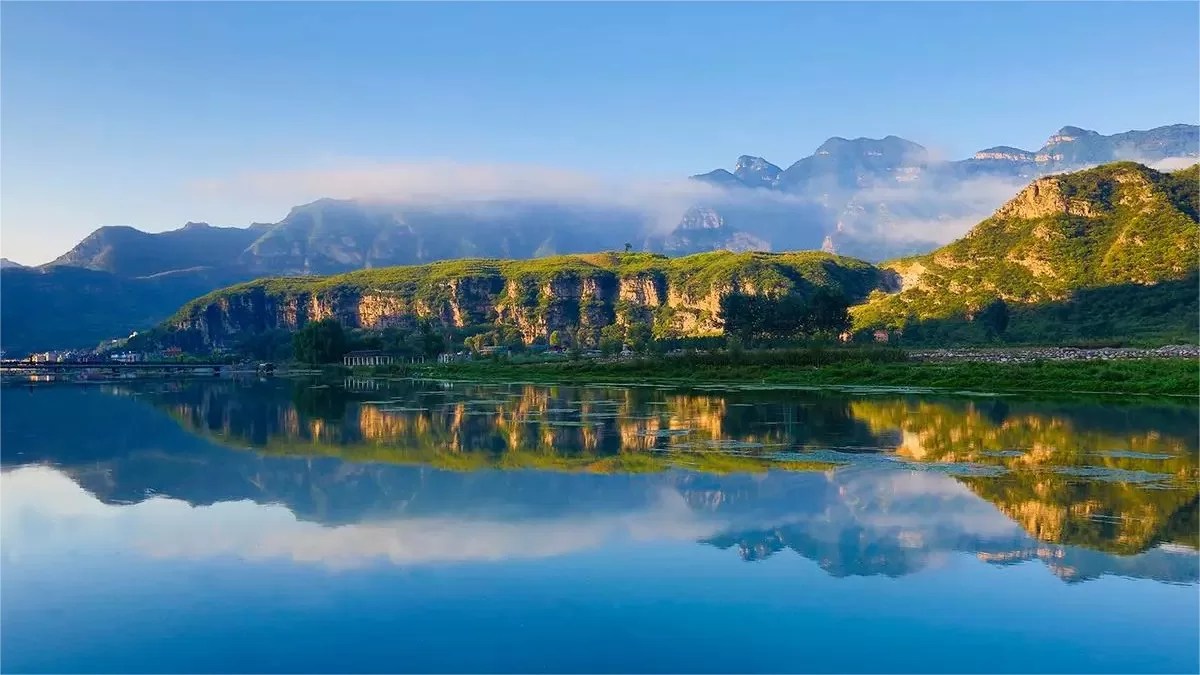
Yesanpo Scenic Area.
Juma River Scenic Area
Juma River, renowned for its pristine waters, is North China’s only unpolluted river.
- Activities:
- Engage in exhilarating rafting or relaxing bamboo rafting along the river’s stunning banks.
- Enjoy the Beach Bathing Place for swimming and sunbathing during the summer months.
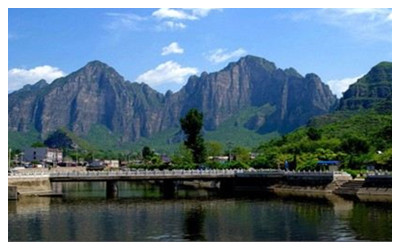
Yesanpo Scenic Area.
The river’s crystal-clear waters and surrounding majestic peaks provide a picturesque backdrop for leisure and adventure.
Culinary Delights
No visit to Yesanpo is complete without indulging in its distinctive cuisine:
- Roast Whole Lamb: A local specialty, perfect for group dining, offering tender meat with a crispy skin.
- Wild Mushroom Stewed Free-Range Chicken: A warming dish made with locally sourced mushrooms and free-range chicken, ideal for the colder months.
- Laishui Walnuts: Known for their unique shapes and textures, these walnuts are a must-try for collectors and food lovers alike.
Final Thoughts
With its breathtaking landscapes, rich historical tapestry, and tantalizing culinary experiences, Yesanpo Scenic Area is a treasure trove waiting to be explored. Engaging with this remarkable destination will leave you with unforgettable memories and a deeper appreciation for China’s cultural heritage. Whether you are an adventurer, a history buff, or a food enthusiast, Yesanpo has something special to offer everyone.
Planning Your Visit: A Practical Guide
Planning Your Visit: A Practical Guide
Visiting the Yesanpo Scenic Area is an opportunity to immerse yourself in the rich tapestry of China’s natural beauty and historical significance. Situated in Laishui County, Baoding City, Hebei Province, this UNESCO Global Geopark boasts stunning landscapes and a wealth of cultural heritage. Here’s everything you need to know to make the most of your trip.
Getting There
Transportation Options:
– By Air: The nearest major airport is Beijing Capital International Airport (PEK), approximately 130 kilometers away. From there, you can take a train or bus to Baoding and then a taxi or local bus to Yesanpo.
– By Train: High-speed trains from Beijing to Baoding run frequently and take about an hour. From Baoding, you can take a local bus or taxi to reach Yesanpo.
– By Bus: There are direct buses from Beijing to Yesanpo, which take about 3-4 hours. Check local schedules for the latest departures.
Best Time to Visit
Yesanpo is a year-round destination, each season offering unique experiences:
– Spring (March to May): Witness blooming flowers and lush greenery.
– Summer (June to August): Ideal for cooler temperatures and refreshing mountain escapes.
– Autumn (September to November): Enjoy stunning red leaves and comfortable weather.
– Winter (December to February): Experience serene landscapes covered in snow, perfect for solitude and winter photography.
Admission Tickets
Each scenic area within Yesanpo requires separate admission tickets:
– Baili Gorge: 100 yuan/person
– Yugudong: 65 yuan/person
– Baicaopan: 60 yuan/person
– Longmen Tianguan: 50 yuan/person
– Juma River: Free (additional charges for activities like rafting)
Tip: For the latest updates and to purchase tickets online, search for the official WeChat public account “野三坡风景区”.
Opening Hours
The scenic area operates seasonally:
– April 1 to October 31:
– Baili Gorge, Yugudong, Longmen Tianguan: 7:00 AM – 6:00 PM
– Baicaopan: 8:00 AM – 5:00 PM
– Juma River: Open all day (activities from 8:00 AM – 5:00 PM)
- November 1 to March 31: Off-season hours apply, with some areas closed; check in advance.
Suggested Itineraries
One-Day Tour:
– Morning: Explore Baili Gorge, entering from Haitang Valley and exiting via Shixuan Valley (3-4 hours).
– Afternoon: Experience the Juma River through rafting or bamboo rafting (2-3 hours).
Two-Day Tour:
– Day 1: Baili Gorge in the morning, followed by Yugudong in the afternoon. Spend the night at a farmhouse to enjoy local delicacies like roast whole lamb.
– Day 2: Visit Baicaopan in the morning, climb to the peak, and explore Longmen Tianguan in the afternoon.
Three-Day Tour:
– Day 1: In-depth exploration of Baili Gorge and Juma River activities.
– Day 2: Visit Yugudong and Baicaopan, including a stay at a farmhouse.
– Day 3: Discover Longmen Tianguan, focusing on military history and cliff inscriptions.
Cuisine to Savor
Indulging in local culinary delights is a must:
– Roast Whole Lamb: A flavorful dish perfect for group dining, best enjoyed in local farms.
– Laishui Walnuts: Known for their unique shapes and textures, they are a must-try for collectors and those interested in local crafts.
– Wild Mushroom Stewed Free-Range Chicken: A nourishing dish best experienced in autumn and winter.
– Corn Cakes: A staple home-cooked food that pairs well with various dishes.
– Juma River Fish: Freshly caught, these fish are renowned for their delicate flavor.
Cultural Insights
Yesanpo is not only about breathtaking landscapes; it also boasts a rich cultural heritage:
– Historical Significance: The area has been inhabited for over 7,000 years and features relics from the Ming and Qing dynasties.
– Folk Traditions: Experience local customs, including the Yesanpo Traditional Wedding Custom, which is recognized as an Intangible Cultural Heritage of Hebei Province.
Practical Tips
- Wear Comfortable Shoes: The terrain can be rugged, especially in the gorge areas.
- Stay Hydrated: The high concentration of negative oxygen ions can be invigorating, but it’s essential to drink plenty of water.
- Respect Nature: Follow local guidelines to preserve the stunning natural environment.
With this guide in hand, you’re ready to explore the enchanting Yesanpo Scenic Area, where nature and history intertwine to offer an unforgettable experience. Safe travels!
Tickets: Prices, Booking, and Tips
Exploring Yesanpo Scenic Area: Tickets, Prices, Booking, and Tips
When planning your visit to the breathtaking Yesanpo Scenic Area in Hebei Province, it’s essential to be well-informed about ticket prices, booking methods, and some insider tips to enhance your experience. This stunning region, celebrated for its diverse landscapes and rich cultural history, offers various attractions that cater to every type of traveler.
Ticket Prices
Each scenic area within Yesanpo has its own admission fee, allowing visitors to choose specific sites of interest. Here’s a breakdown of the current ticket prices:
- Baili Gorge Scenic Area: 100 yuan per person
- Yugudong Scenic Area: 65 yuan per person
- Baicaopan Scenic Area: 60 yuan per person
- Longmen Tianguan Scenic Area: 50 yuan per person
- Juma River Scenic Area: Free admission (note that entertainment activities such as rafting [80 yuan] and bamboo rafting [40 yuan] are charged separately)
Booking Tickets
For convenience, tickets can be purchased online. Simply search for the official WeChat public account “野三坡风景区” to access the latest updates, ticket purchasing options, and any promotional offers. This method not only saves time but also allows you to plan your visit around the best times to explore each area.
Opening Hours
The Yesanpo Scenic Area operates from April 1 to October 31. Here are the specific opening hours for each section:
- Baili Gorge, Yugudong, Longmen Tianguan: 7:00 AM – 6:00 PM
- Baicaopan: 8:00 AM – 5:00 PM
- Juma River Scenic Area: Open all day, with entertainment activities available from 8:00 AM – 5:00 PM
It’s important to note that from November 1 to March 31, some areas may close for the season. Always check the official site or contact the area for current conditions before your visit.
Travel Tips
-
Plan Your Route: Depending on your interests, a one-day, two-day, or even a three-day itinerary can be tailored to include the highlights of Yesanpo. Consider starting your journey early in the morning to maximize your time at each site.
-
Dress Appropriately: The region experiences varying weather patterns, so dress in layers and wear comfortable hiking shoes. The beautiful landscapes are best enjoyed when you are prepared for the elements.
-
Sample Local Cuisine: While in Yesanpo, don’t miss out on the opportunity to savor local delicacies such as roast whole lamb and wild mushroom stewed free-range chicken. These dishes are not only delicious but also offer a taste of the region’s culinary heritage.
-
Stay Hydrated: As you explore, especially if you partake in outdoor activities like rafting, keep yourself hydrated. There are various spots to grab refreshments, but carrying a reusable water bottle is advisable.
-
Respect Nature and Culture: Yesanpo is not just a natural wonder; it’s steeped in history and local customs. Be respectful of the environment, follow any posted guidelines, and take the time to engage with the local culture, particularly during folk performances.
By understanding the ticketing process, pricing, and practical tips for visiting Yesanpo Scenic Area, you can immerse yourself in this stunning region’s natural beauty and rich history, making your journey both enjoyable and memorable.
How to Get There: A Complete Transportation Guide
Getting to Yesanpo Scenic Area: Your Comprehensive Transportation Guide
Nestled at the confluence of the Taihang and Yanshan Mountains in Laishui County, Baoding City, Hebei Province, the Yesanpo Scenic Area is a treasure trove of natural beauty and rich history. For international travelers eager to explore this UNESCO Global Geopark, understanding the various transportation options available is essential. Here’s your complete guide to navigating your way to Yesanpo.
1. Arriving in China
International Airports:
Most international travelers will begin their journey in Beijing, as it is the nearest major city with a well-connected international airport.
- Beijing Capital International Airport (PEK): The primary airport serving the capital, approximately 150 kilometers from Yesanpo.
- Beijing Daxing International Airport (PKX): A newer airport located about 160 kilometers away.
2. From Beijing to Baoding City
Once you arrive in Beijing, your next step is to reach Baoding. There are several transportation options available:
- By Train:
- High-Speed Rail (HSR): The most efficient way to travel. Take an HSR train from Beijing West Railway Station to Baoding Railway Station. The journey takes about 1.5 to 2 hours. Trains depart frequently throughout the day.
-
Regular Train: If you prefer a more economical option, regular trains are available but take longer (approximately 3 to 5 hours).
-
By Bus:
-
Long-distance buses operate from various stations in Beijing, including Liuliqiao Long-distance Bus Station. The bus journey to Baoding typically takes around 2.5 to 3 hours.
-
By Car:
- Renting a car or using a ride-hailing service is another option. The drive from Beijing to Baoding takes about 2 to 3 hours, depending on traffic.
3. From Baoding to Yesanpo Scenic Area
Upon reaching Baoding, your next step is to head to the Yesanpo Scenic Area. Here are the ways you can make this trip:
- By Bus:
- Local Buses: From Baoding Railway Station, you can take a local bus to Laishui County. Buses run regularly and the journey takes about 1 to 1.5 hours. Look for buses heading to Laishui or specifically to Yesanpo.
-
Direct Shuttles: Some hotels and travel agencies in Baoding offer direct shuttle services to Yesanpo. It’s advisable to check in advance for schedules.
-
By Taxi or Ride-Hailing Service:
-
For convenience, especially if traveling with a group or with heavy luggage, consider taking a taxi or using a ride-hailing app (such as Didi Chuxing) directly from Baoding to Yesanpo. The drive is approximately 70 kilometers and takes about 1 hour.
-
By Car Rental:
- If you prefer the freedom of driving, you can rent a car in Baoding. This option allows you to explore the surrounding areas at your own pace. Be sure to have a GPS or map ready, as road signs may be primarily in Chinese.
4. Within Yesanpo Scenic Area
Once you arrive at Yesanpo, getting around the scenic area is relatively straightforward. Here are your options:
- Walking: Many of the scenic spots are interconnected, and walking allows you to immerse yourself in the stunning landscapes.
- Local Transportation: Look for electric shuttle buses or local taxis within the scenic area, particularly for accessing more remote attractions.
- Guided Tours: Many visitors opt for guided tours which include transportation between key points of interest, providing a deeper insight into the area’s history and culture.
Tips for Travelers:
- Language: While major transport hubs may have English signage, having a translation app can be very helpful.
- Tickets: Purchase tickets for attractions online in advance when possible, or at the entrance to avoid long lines.
- Timing: Plan your travel during the off-peak hours to avoid heavy traffic, especially when heading to and from Beijing.
With this transportation guide, you are well-equipped to embark on your journey to the breathtaking Yesanpo Scenic Area, where history, culture, and nature await. Enjoy your adventure!
Local Cuisine and Accommodation Nearby
Savoring Yesanpo: Culinary Delights and Cozy Stays
Nestled amidst the breathtaking landscapes of the Yesanpo Scenic Area, the local cuisine offers a delightful exploration of flavors that reflect the region’s rich cultural heritage. Travelers seeking to immerse themselves in the authentic tastes of this area will find a range of delectable dishes, paired with inviting accommodations that promise a comfortable stay.
Must-Try Local Dishes
-
Roast Whole Lamb
A signature dish of Yesanpo, the roast whole lamb is truly a feast for the senses. Prepared from local free-range goats, the lamb is marinated and roasted to perfection, boasting golden, crispy skin and tender, juicy meat. Typically serving 10-15 people, this dish is perfect for group dining and can be savored at various farmhouses in the area. Expect to pay around 800-1,200 yuan for this culinary experience. -
Wild Mushroom Stewed Free-Range Chicken
Yesanpo’s lush mountains are a treasure trove of wild mushrooms, which are expertly combined with free-range chickens to create a rich and nourishing stew. This traditional dish is especially comforting during the cooler months and can be found in many local eateries for about 80-120 yuan per serving. -
Laishui Walnuts
Renowned for their unique shapes and rich flavor, Laishui walnuts are a specialty of the region. Not only do they have a high collection value, but they also promote health through frequent handling. Various walnut shops scattered throughout the scenic area offer these treats, with prices ranging from tens to thousands of yuan depending on quality. -
Corn Cakes
A staple of local home cooking, corn cakes are made from locally grown corn flour and are both sweet and nutritious. They can be enjoyed on their own or paired with stews and stir-fries. Priced at about 10-15 yuan per serving, these simple delights are widely available in farmhouses. -
Juma River Fish
The crystal-clear waters of the Juma River yield a variety of fresh fish, including carp and catfish. The local specialty, Juma River grilled fish, is particularly popular for its crispy exterior and tender, flavorful meat. You can enjoy this dish along the river for approximately 50-100 yuan per half kilogram.
Cozy Accommodations
For those wishing to extend their stay and fully embrace the natural beauty and culinary offerings of Yesanpo, a selection of charming accommodations awaits:
-
Farmhouses
Several family-run farmhouses in the scenic area provide a homely atmosphere where you can enjoy authentic local meals, such as the famous roast whole lamb and wild mushroom chicken stew. These accommodations offer basic amenities and a chance to interact with locals, providing an enriching cultural experience. -
Guesthouses
Located conveniently near major attractions, guesthouses in Yesanpo offer comfortable rooms and often feature local hospitality. Many of them serve breakfast and dinner with local specialties, making it easy for travelers to indulge in Yesanpo’s culinary delights. -
Resorts
For a more luxurious experience, consider staying at one of the nearby resorts that combine comfort with stunning views of the surrounding mountains and forests. These establishments typically offer modern amenities and easy access to outdoor activities, ensuring a relaxing and fulfilling stay.
Whether you choose to savor the local cuisine or retreat to one of the welcoming accommodations, Yesanpo Scenic Area promises an unforgettable journey into the heart of China’s natural beauty and cultural richness.
Frequently Asked Questions
Frequently Asked Questions about Yesanpo Scenic Area
1. What is the best time to visit Yesanpo Scenic Area?
Yesanpo Scenic Area offers unique beauty in every season, making it a year-round destination. Spring (April to June) showcases blooming flowers, summer (July to August) offers a cool retreat from the heat, autumn (September to November) is adorned with vibrant red leaves, and winter (December to March) transforms the area into a snowy wonderland. The peak visiting months are during the spring and autumn for their pleasant weather.
2. How do I get to Yesanpo Scenic Area?
Yesanpo Scenic Area is located in Laishui County, Baoding City, Hebei Province, and is accessible by car or public transportation. The nearest major city is Beijing, from where you can take a bus from the Beijing West Bus Station or a train to Baoding. Once in Baoding, local buses or taxis can take you directly to the scenic area.
3. Are there accommodation options within Yesanpo Scenic Area?
Yes, there are several farmhouse-style accommodations available within the scenic area. These farmhouses not only provide a comfortable stay but also offer local cuisine, such as the renowned roast whole lamb. It is advisable to book in advance, especially during peak seasons.
4. What are the main attractions in Yesanpo Scenic Area?
Yesanpo is home to several stunning attractions, including:
– Baili Gorge: Famous for its narrow valley and towering cliffs.
– Yugudong (Fish Valley Cave): A large karst cave with fascinating geological formations.
– Baicaopan: The highest point of Yesanpo, known for its rich biodiversity.
– Longmen Tianguan: A historic military site with cliff inscriptions.
– Juma River: Offers recreational activities like rafting and bamboo rafting.
5. What types of activities can I do in Yesanpo?
Visitors can engage in a variety of activities, including:
– Hiking and exploring scenic trails
– Rafting and bamboo rafting on the Juma River
– Visiting historical sites and learning about local culture
– Enjoying local cuisine, including traditional dishes like roast whole lamb
– Relaxing amidst the natural beauty in a serene environment
6. Are there any entrance fees for the scenic areas?
Yes, each scenic area within Yesanpo has its own entrance fee:
– Baili Gorge: 100 yuan/person
– Yugudong: 65 yuan/person
– Baicaopan: 60 yuan/person
– Longmen Tianguan: 50 yuan/person
– Juma River: Free (additional charges for activities like rafting)
7. Can I purchase tickets online for Yesanpo Scenic Area?
Yes, tickets can be purchased online through the official WeChat public account “野三坡风景区.” This method is convenient and allows you to avoid long queues at the entrance.
8. What local foods should I try while visiting Yesanpo?
You must try the local specialties, such as:
– Roast Whole Lamb: A must-try dish, known for its tender meat and crispy skin.
– Wild Mushroom Stewed Free-Range Chicken: A hearty and nutritious dish, perfect for chilly days.
– Laishui Walnuts: Known for their quality, they make a great souvenir.
– Corn Cakes: A traditional home-cooked food that pairs well with local dishes.
– Juma River Fish: Freshly caught and delicious, especially grilled.
These culinary delights reflect the region’s rich agricultural heritage and local flavors, enhancing your overall travel experience.
Final Thoughts on Your Trip
As your journey through the Yesanpo Scenic Area comes to a close, you may find yourself reflecting on the rich tapestry of experiences that this remarkable region offers. Nestled at the intersection of two majestic mountain ranges, Yesanpo is not merely a destination; it is a gateway to the heart of China’s natural beauty and profound history.
Nature’s Splendor and Cultural Heritage
Throughout your visit, you have traversed breathtaking landscapes—from the soaring cliffs of Baili Gorge to the serene waters of the Juma River. Each scenic spot showcases the area’s “magnificent, dangerous, magical, and secluded” charm, inviting you to immerse yourself in its beauty. The ancient relics scattered across the region, such as the cliff inscriptions and remnants of military fortifications, whisper tales of a storied past that add depth to the stunning vistas.
A Culinary Delight
No visit is complete without savoring the local cuisine. The mouthwatering roast whole lamb, nutritious wild mushroom stews, and the delightful corn cakes are not just meals; they are an invitation to indulge in the flavors of the land. Enjoying these dishes in the rustic charm of local farmhouses enhances the experience, allowing you to connect with the community and its traditions.
Seasons of Change
Remember that Yesanpo is a year-round destination, each season painting the landscape in different hues. Spring brings a riot of blossoms, summer offers a cool respite, autumn cloaks the mountains in fiery reds, and winter transforms the area into a serene wonderland. No matter when you visit, you will find a unique charm waiting to be discovered.
A Journey Worth Taking
As you depart from Yesanpo, take with you the memories of awe-inspiring natural wonders, rich cultural heritage, and the warmth of local hospitality. Whether you hiked through the enchanting canyons, marveled at the karst caves, or relaxed by the pristine river, your adventure is woven into the fabric of this historic land.
We hope you leave Yesanpo not just with photographs and souvenirs, but with a deeper appreciation of China’s extraordinary history and culture. Until your next journey, may the spirit of Yesanpo inspire you to explore further and discover the treasures that await in every corner of this vast and beautiful country. Safe travels!